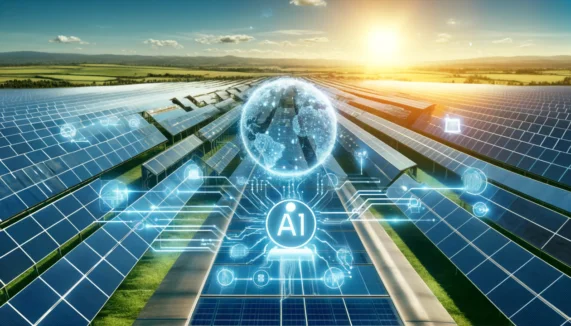
As the world transitions toward cleaner energy, the biggest challenge facing renewable power systems today isn’t generation, it’s balancing supply and demand. Unlike traditional fossil-fuel plants, renewable sources like solar and wind are variable by nature. A cloudy day or a period of low wind speed can cause sharp dips in production, creating instability in the grid.
This is where Artificial Intelligence (AI) is transforming the renewable energy landscape.
Why Forecasting Matters in Renewable Energy
Energy forecasting allows grid operators, utilities, and power producers to anticipate energy generation and consumption patterns.
Accurate forecasts help:
- Prevent energy shortages or oversupply
- Optimize storage system usage
- Enable real-time pricing and smart trading
- Reduce carbon footprint and operational costs.
Traditional forecasting models rely on static weather predictions and historical trends. While useful, they often fail to adapt to rapid environmental changes. AI brings a dynamic, data-driven approach to forecasting that continuously learns and improves.
How AI Enhances Energy Forecasting
AI-powered forecasting systems combine machine learning (ML), deep learning and real-time data analytics to deliver precise predictions.
Here’s how it works:
Data Collection: AI models ingest massive datasets, weather data, satellite imagery, turbine speed, solar irradiance and historical consumption records.
Pattern Recognition:
ML algorithms identify correlations between environmental factors and energy generation.
Adaptive Learning:
The system learns from new data to improve prediction accuracy over time.
Real-Time Adjustment:
AI can automatically adjust energy dispatch and storage strategies as conditions change.
This intelligent cycle enables utilities to maintain grid stability and maximize renewable utilization even under fluctuating conditions.
Key Benefits of AI-Based Forecasting
- Improved Accuracy: Up to 30–40% better forecasts compared to traditional models.
- Efficient Storage Use: Optimize battery charging/discharging cycles.
- Reduced Curtailment: Prevents renewable energy wastage by aligning generation with demand.
- Cost Savings: Lowers operational and maintenance costs through predictive insights.
- Sustainability Impact: Enables higher penetration of renewable energy into the grid.
How SMHcoders Can Help
At SMHcoders, we specialize in building AI-driven automation and industrial intelligence systems tailored to the energy and process industries. Our expertise bridges data science, system integration and domain engineering, making us the ideal partner for developing scalable forecasting and control solutions.
Here’s how we can support renewable-energy clients:
- Custom AI Forecasting Models: Using ML frameworks like TensorFlow and PyTorch to predict renewable output across multiple sources.
- Integration with SCADA and IoT Systems: Real-time data ingestion and feedback loops for continuous optimization.
- Predictive Maintenance: AI models that detect early equipment anomalies in solar farms and wind turbines.
- Smart Energy Management Dashboards: Visual analytics for decision-makers to monitor performance and forecast trends.
- End-to-End Automation Solutions: From data acquisition to actionable insights and operational control.
By combining AI intelligence with energy domain expertise, SMHcoders helps organizations achieve stability, efficiency, and sustainability in the renewable era.

